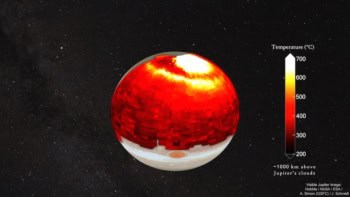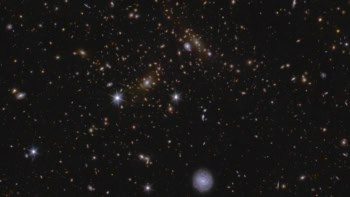
What do sunspots and the Paraná river in South America have in common? The answer, say physicists in Argentina, is that when the number of sunspots goes up, so does the river’s level. Indeed, the correlation between the two is so strong that the physicists believe that solar activity could be used to predict when the Rio Paraná will flood.
Rising in southern Brazil and flowing through Paraguay and Argentina before reaching the Atlantic Ocean near Buenos Aires, the Paraná is the world’s fourth largest river in terms of water flow. Because much of the river is navigable and flows through heavily populated regions, its rate of flow has been recorded continuously since 1904.
Meanwhile, 149 million km away on the surface of the Sun, sunspots are dark areas that form at regions of intense magnetic activity. The number of sunspots rises and falls in an 11-year cycle and physicists know that the amount of radiation given off by the Sun (solar irradiance) is greatest when there are lots of sunspots.
Climate researchers have already found evidence that solar irradiance can affect Earth’s climate — boosting rainfall in the Asian monsoon, for example.
Now, though, Pablo Mauas and colleagues at the University of Buenos Aires and the National Institute of Agricultural Technology have shown that the Rio Paraná’s flow at Corrientes — about 900 km upstream from Buenos Aires — is strongly correlated to the number of sunspots visible on the surface of the sun at that time (Phys. Rev. Lett. 101 168501).
Three factors affect flow
The team analysed flow data from 1904–2003 and concluded that three factors have affected water levels on three different timescales. One is climate change, which Mauas believes has boosted the flow of the river by about 20% since 1904 — an increase that seems to have occurred mostly over the past 30 years. The team also found the Paraná was affected by el Niño — a climate oscillation in the South Pacific that usually occurs about once every five years. After removing both of these effects from the data the team found what Mauas calls a “striking correlation between the solar data and the stream flow”.
According to Mauas, the flow of a major river is good indicator of how much precipitation has fallen over its basin because — unlike other ways of measuring rainfall — it smoothes out local variations. Mauas believes that the increased rainfall could be caused by higher temperatures in tropical regions during periods of high solar irradiance. This, he believes causes greater evaporation in the tropics with this moist air transported southward to the Paraná basin.
The team is now working on a way to use sunspot number and the el Niño index, which quantifies the oscillation, to predict future water levels on the Paraná.



